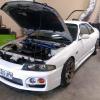Bnr34 Rb26/30 Conversion
Announcements
-
Similar Content
-
Latest Posts
-
By TurboTapin · Posted
I purchased this one. Very well priced and works great. I was rough with it to see if it will last and had no issues. Teslong Two-Way Articulating Borescope with Light, Industrial Endoscope Inspection Camera with Articulated Probe, Flexible Mechanic Fiber Optic Snake Scope Cam for Wall Automotive Engine Inspect-5FT : Amazon.ca: Industrial & Scientific -
By TurboTapin · Posted
I've done about 4000km's on it. I'm thinking of maybe "Working" from home aka my garage this week and getting it out so I can drop it off early next week. He said bring it over right away and didn't make any excuses, so it seems like he's going to work with me on getting it resolved asap. I'll let you know what I find when I take it apart later this week.
-





Recommended Posts
Create an account or sign in to comment
You need to be a member in order to leave a comment
Create an account
Sign up for a new account in our community. It's easy!
Register a new accountSign in
Already have an account? Sign in here.
Sign In Now